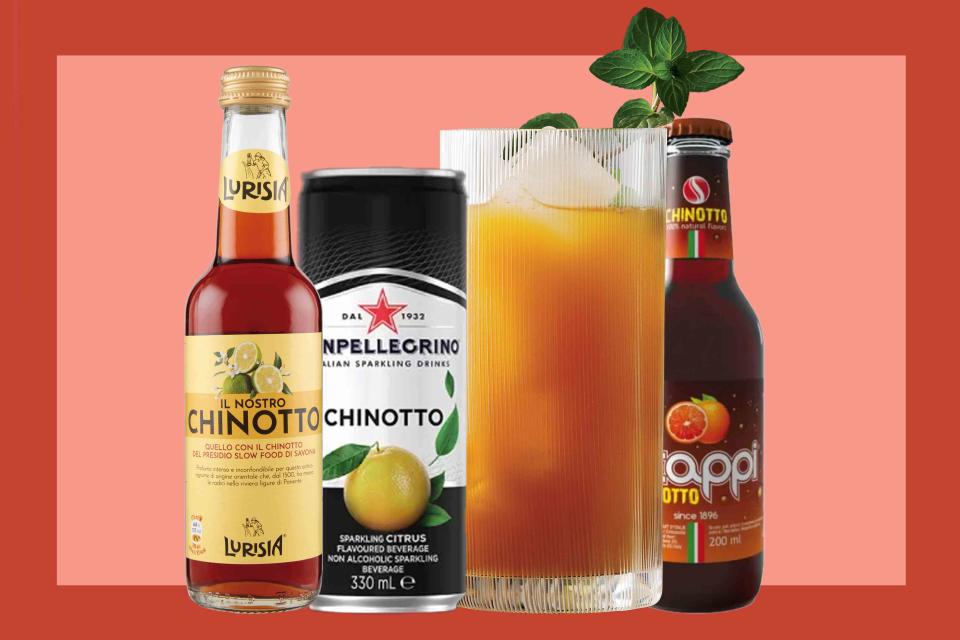Chinotto Soda Is Grown-Up Diet Coke
This fizzy citrus soda belongs in your fridge.

Food & Wine / LUCAS ALLEN / Lurisia / San Pellegrino /
The internet is full of people gushing about cheerfully branded probiotic and adaptogenic sodas. While I’ve tried my fair share of so-called “little beverages”, nothing inspired me to join the discourse before impulse-buying a four-pack of San Pellegrino’s Chinotto sodas, which come in adorable, dimpled crown-cap bottles that are roughly half the size of a standard beer.
Chinotto oranges, a niche citrus you’re unlikely to encounter at your local grocery store, look a lot like mandarin oranges, but taste more like a hybrid of kumquats, yuzus, and lemons. Dino Borri, global vice president of Italian mega-market Eataly (which has, over the years, carried several brands of chinotto soda) says that on their own, these fruits are highly acidic, which makes them less appealing to snack on, but especially good for juicing or infusions.
“Chinotto comes from the sour fruit of the myrtle-leaved orange tree, which was brought to Italy from China circa 1500,” says Borri. “Traditionally, the plant is grown along the Liguria Riviera from Varazze to Finale, but it can now be found along the coast from the North to the South of Italy.”
Related: 17 Nonalcoholic Cocktails for Your Next Holiday Party
This soda scratches the itch when I want to order an amaro as a digestif at the end of a meal. Packed with notes of cinnamon, cardamom, and of course, an acidic punch of citrus, it’s a dark-brown soda that closely resembles Coke or Dr. Pepper, but is so much more complex.
While I love having another simple, nonalcoholic drink to pull out of the fridge and enjoy without giving it too much thought, restaurants across New York City have also embraced the mixology potential of chinotto soda, especially in lower-proof drinks.
At One Fifth, a classic Italian-American restaurant in Greenwich Village, chinotto soda is the fizzy, driving force behind a nostalgic riff on an ice cream float made with amaro and gelato. At Margot, a wine-focused neighborhood spot in Fort Greene, Brooklyn, it’s featured in the lunch menu-only Canadian Tuxedo cocktail alongside verjus (another ingredient you should keep in the fridge for a no-effort spritz), as well as Madeira wine plus an herbaceous sea buckthorn aperitif.
But the best cocktail I’ve enjoyed with chinotto also happens to be the simplest. It’s at San Sabino, the marvelous new Italian-American seafood joint from the team behind Don Angie, where Stappi chinotto soda takes center stage with nutty orgeat and lemon in a nonalcoholic fizzy drink destined to be a personal summer favorite.
Despite its popularity (and my penchant for it), San Pellegrino doesn’t currently sell or distribute its chinotto soda in the United States. This means third-party trading companies, many of which work with specialty grocery stores, are the only way to get your hands on it stateside. Brands like Lurisia, a chinotto soda that hails from Liguira, and Stappi are more readily available, though I’m partial to San Pellegrino’s harder-to-find option, which is the best balanced.
A tiny soda that embraces the thrill of the chase? Count me in.
For more Food & Wine news, make sure to sign up for our newsletter!
Read the original article on Food & Wine.


